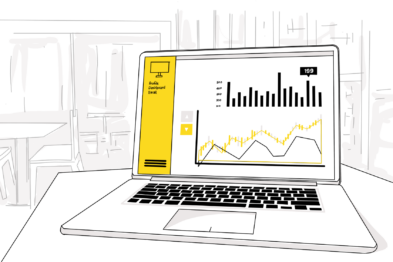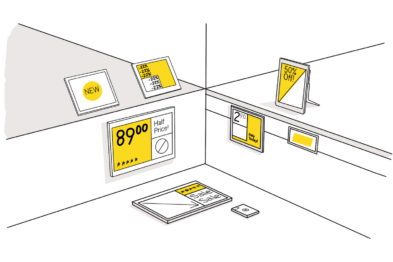Mastering Retail Inventory Management: Boosting Efficiency & Profitability
Retail requires organization. Having the goods customers need and expect available at the right time and price without overstocking is the key to running a successful business. This is where retail inventory management comes in. Modern inventory management techniques optimize in-store operations by relying on automation, data analytics, and software solutions.
What is Retail Inventory Management?
From ensuring that you are stocking the right goods at the right time to guaranteeing the products you are selling are available in sufficient quantity without mobilizing space and resources unnecessarily, retail inventory management is at the heart of the supply chain process.
Definition and Importance
Retail Inventory Management is the process of tracking and controlling stock quantity, cost, and location at any given time, helping store owners identify what to order and when. To achieve the ideal balance, inventory management techniques optimize every step involved in ordering, storing, selling, and tracking inventory. The end goal is to ensure customer satisfaction and get the best possible ROI from your stock.
Key Components of an Effective Inventory System
Retail inventory management hinges on 4 main components:
Ordering
Retail inventory management is a circular notion in which every component strongly depends on the perfect execution of the others. In the case of ordering, it’s all about keeping track of stock counts, analyzing inventory data in light of sales, and making sure stock doesn’t exceed storing capacity.
Storing
Similarly, storing goods efficiently doesn’t equate to having products sitting in a warehouse for the sake of “not running out”. On the contrary, well-managed stock is selling out and being replenished constantly and seamlessly.
Selling
Airtight retail inventory management can also increase your profit margins by cutting down on excess stock and unnecessary inventory costs to free up your budget for new items to sell.
Tracking
Finally, tracking gives you all the data you need to identify slow-moving stock and optimize product availability in your store. This is where solutions from VusionGroup can bring every step together.
Why Inventory Management is a Game-Changer
Optimal inventory management is a means of…
Maximizing Profits
Retail inventory management will give you valuable insights into your inventory performance. In turn, you can use this data to bring your dead stock down to a minimum and focus on building an inventory with a strong potential for renewal… and profit.
Understanding your KPIs will also help you manage your expenses. For instance, if you wish to reduce your purchasing costs, you could start by studying your sell-through rate.
Avoiding Stockouts and Overstocking
Unmoving stock is immobilized capital. It sits there, taking up valuable shelf space without bringing in a profit. An optimized retail inventory management system will help you pinpoint stock that is moving too slowly so you can implement promotional strategies to shift it before it becomes dead stock.
Similarly, any stockout is a shortfall. Inventory management lets you ensure your store doesn’t run out of items that would otherwise have sold.
Time-Saving
Retail inventory management relies on technology, such as software tracking and data analysis. These real-time integrated systems take the guesswork out of the equation, saving time for more meaningful tasks.
Strategies to Optimize Retail Inventory
There are several methods by which you can optimize your retail inventory management, including…
FIFO and LIFO Methods
FIFO—or First In First Out—is a retailing method that aims to sell the oldest item in your inventory first. It strives to move the old stock before the new, ensuring nothing sits on the shelf for too long.
The LIFO—Last In First Out—method takes the opposite approach, assuming the last stock you purchased is the first you will sell. Because it is most likely to lead to dead stock, LIFO is seldom used. However, it matches current revenue with current expenses more closely than any other method.
ABC Analysis
ABC—or Activity-Based Costing—is an inventory classification method that sorts it according to 3 tiers:
- 80% of your revenue will come from 20% of your products.
- 15% of your revenue will come from 30% of your products.
- 5% of your revenue will come from 50% of the products you sell.
This allows you to prioritize your inventory monitoring based on its potential.
Just-in-Time Inventory
Just-in-Time—or JIT—stock management is a method that seeks to have a supply chain in constant movement. Your inventory is always stocked sufficiently to meet demand without running out or having excess sit on the shelves.
While this solution is ideal for your cash flow, it requires a robust retail inventory management system integrating advanced tools and data.
The Role of Data Analytics in Inventory Management
Data analytics provides the metrics you need to manage your inventory ideally. From customer behavior to stocks, supply, and demand, data answers all the questions through concrete figures. When integrated with the right tools and software, it sits at the heart of your inventory management strategy.
Tools and Software for Inventory Management
Data analytics and Retail Intelligence software is by far the most effective way to forecast demand, determine reorder points, and even improve customer service. Leveraging data is one of the main benefits of Digital Labeling in Stores.
POS Systems
A Point-of-Sale—POS—system updates your inventory automatically as the goods are sold. These systems ensure real-time data is reflected across locations, interfacing directly with your financial systems and inventory management software.
Inventory Management Software
The store’s inventory management software brings it all together, keeping track of your inventory while automating reordering and aisle replenishment. Accurate and free of the risk of human error, inventory management software is the best way to reduce costs while increasing in-store productivity and customer satisfaction.
The key performance indicators (KPIs) to track for successful retail inventory management
The most important KPIs to keep track of include inventory turnover, demand forecast accuracy, shrinkage, days on hand, sell-through rate, average inventory, backorder rate, and lead time.
Grocery Stores
Optimal inventory management is especially crucial in grocery stores because they sell products with an (often limited) shelf life. Monitoring product turnover and sell-through rate is therefore even more essential, as is staying on top of your promotion strategy and reordering.
The VusionCloud Retail IoT Platform performs these tasks in real-time and helps keep your inventory up-to-date.




